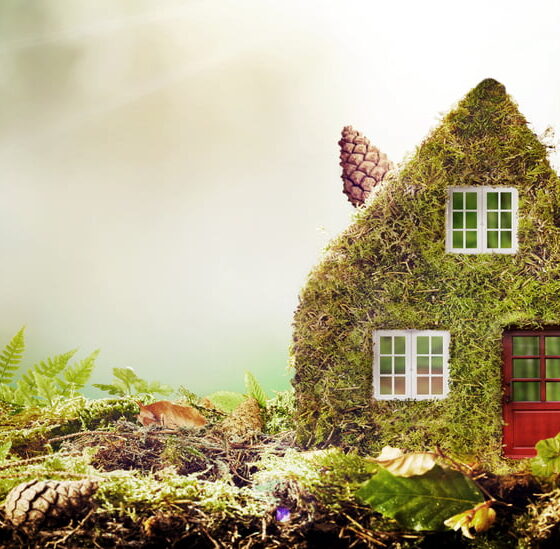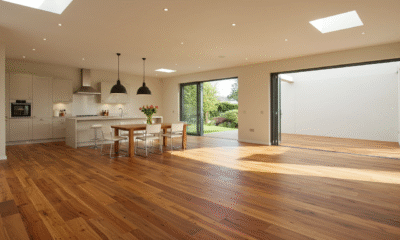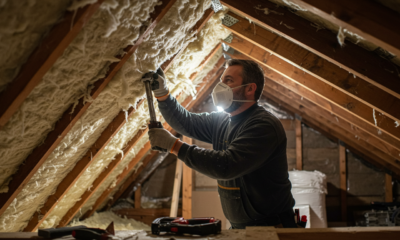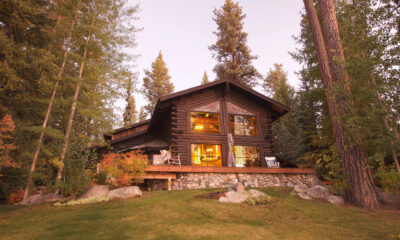When you build a future-ready home, it’s not just about getting smart appliances and devices. It’s also about making it sustainable, which is especially important considering the state of the environment today. There are a lot of things that you can do to make your home eco-friendly.
A sustainable home is a type of residence that’s designed and constructed in a way that causes an as little negative impact on the environment as possible. Thanks to modern technology, building a home that’s equally visually appealing and sustainable is now possible. Read on to find out how to do it.
1. Choose A Sustainable and Renewable Source of Energy
To build a sustainable home, you need to design it to use as much sustainable and renewable energy as possible. There are three primary sources of this type of energy: sun, wind, and water.
Here’s a closer look at the three sustainable and renewable energy main sources and how you can utilize each of them to produce the energy you need for your home:
- Wind – It’s ideal if the area you choose to build your home is windy. You can build a windmill to utilize the power of the wind to produce energy for your home.
- Water – If you’re going to build your home near a lake or river, you can utilize the body of water by creating a dam to produce hydroelectric energy.
- Sun – It’s the best option out of the three. Install solar panels on your home to utilize the sun’s power to produce solar energy.
The different ways to fully utilize each of the main sources of renewable energy is why you need to consider the type of environment where you’re going to build your home. Make sure that it’ll work with your house rather than against it.
2. Level Up your Solar Panels
Solar energy is an unlimited source of renewable energy. So, you should consider installing solar panels on your home to utilize its power. Just make sure that the solar panels you’re going for can provide all the energy your household needs.
Aside from solar panels, you should also consider investing in battery storage. But before you invest in battery storage, you should first know the difference between dumb solar vs smart solar. Dumb solar refers to a solar power system that’s not connected to a battery. On the other hand, smart solar refers to a solar power system with battery storage where the energy is stored. Therefore, a smart solar power system will allow you to use solar power at night.
By investing in battery storage, you’ll have a sustainable and renewable source of energy to power your home while making it less dependent on the grid at the same time.
3. Use Sustainable Building Materials
To build a sustainable home, you need to opt for eco-friendly materials, obviously. Keep in mind, though, that there’s no building material universally considered sustainable. The word ‘sustainable’ is a term that experts use to describe a material that checks the following good points:
- Sustainably harvested – this refers to materials that come from well-managed, transparent, and certified production areas. Wood is a good example of a sustainably harvested building material.
- Recycled or reused – refers to materials that are reprocessed to be used for other purposes, such as rubber tires turned into flooring.
- Locally sourced – these are materials that are sourced from your local area instead of having to ship them from far distances.
- Quickly renewable – these are materials that renew quickly, such as bamboo. Bamboo is a type of grass that proliferates quickly, which means supply is always available, making it an ideal sustainable building material.
- Non-toxic and non-allergic – these are materials that don’t bring about harmful effects to your family and the environment.
The more of these good points you can find in a single material, the better it is to use for building a sustainable home.
4. Build A Smaller Home
The smaller your home is, the more sustainable it can be. As such, you need to consider building a smaller home. It’s also a good idea to be smart in utilizing the most often-wasted spaces in a house, such as basements and garages, if you want to save on your energy bills and reduce your carbon footprint.
Also, it’s better if you can build your house up rather than build it out. By doing so, you can reduce the area you need to heat (during colder months) and cool (during warmer months). This design can also give you the required height to install solar panels and make way for a sustainable and renewable source of energy.
Summing It All Up
Building a home can be an exciting and daunting experience. It’s also worth noting that not all homeowners have the same goal for sustainability. Some want to live in a 100% sustainable home, while others are simply content with taking on a few projects to make their household more energy-efficient. Regardless, every step of the process of building a sustainable home reduces your carbon footprint. Follow the tips mentioned above to design and construct a house that’s energy-efficient and eco-friendly at the same time.





























